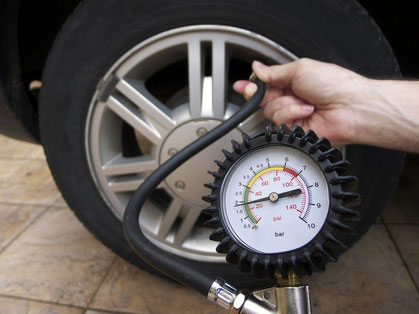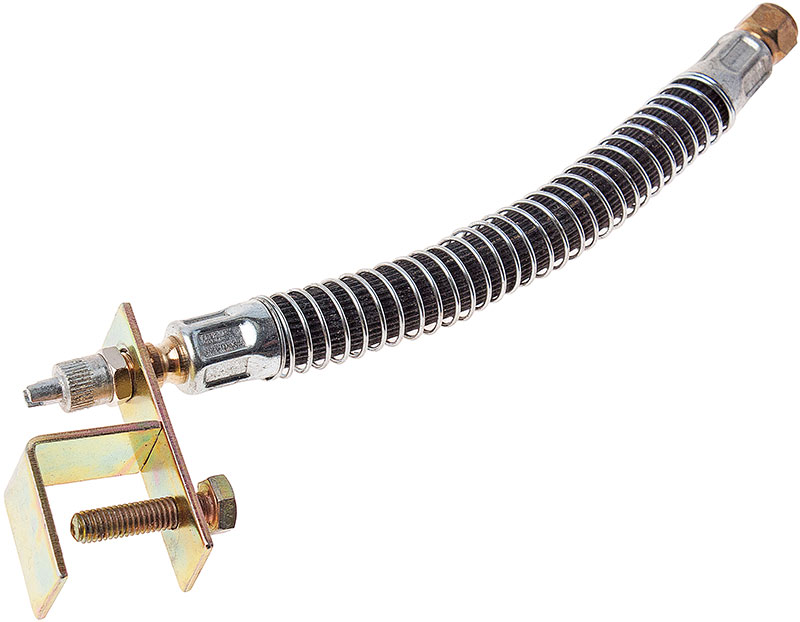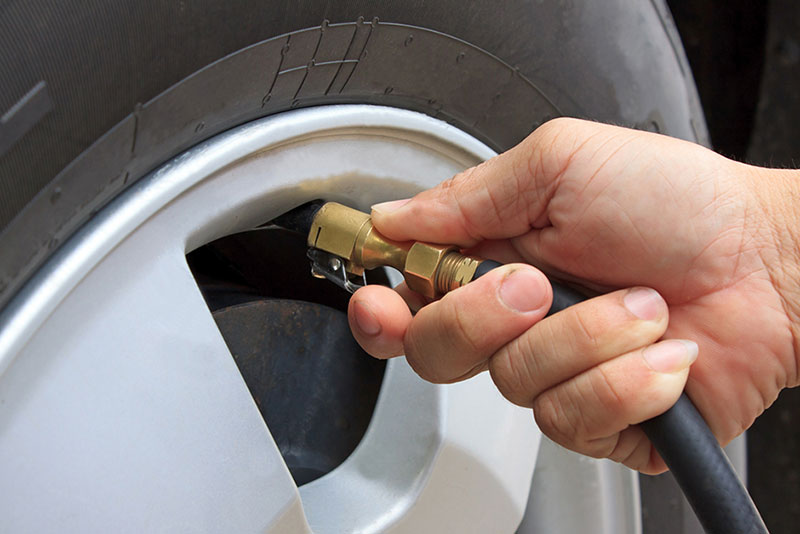
Many trucks have a tire pressure adjustment system that allows you to choose the optimal ground pressure for different conditions. Wheel inflation hoses play an important role in the operation of this system - read about their purpose, design, maintenance and repair in the article.
A general look at the tire pressure control system
A number of modifications of trucks KAMAZ, GAZ, ZIL, MAZ, KrAZ and others are equipped with an automatic or manual tire pressure control system. This system allows you to change (raise and raise) and maintain a particular pressure in the wheels, thereby providing the necessary degree of cross-country ability and efficiency indicators. For example, on hard grounds, it is more efficient to move on fully inflated wheels - this reduces fuel consumption and improves handling. And on soft soils and off-road, it is more efficient to move on lowered wheels - this increases the contact area of tires with the surface, respectively, reduces the specific pressure on the ground and increases cross-country ability.
Additionally, this system can maintain normal tire pressure for a long time when it is punctured, thereby allowing repairs to be postponed until a more convenient time (or until the garage or convenient place is reached). Finally, in a variety of situations, it makes it possible to abandon the time-consuming manual inflation of the wheels, which facilitates the operation of the car and the work of the driver.
Structurally, the wheel pressure control system is simple. It is based on a control valve, which provides the supply or bleed of air from the wheels. Compressed air from the corresponding receiver flows through pipelines to the wheels, where it enters the air channel in the wheel shaft through a block of oil seals and a sliding connection. At the outlet of the axle shaft, also through a sliding connection, air is supplied through a flexible wheel inflation hose to the wheel crane, and through it to the chamber or tire. Such a system provides compressed air to the wheels, both when parked and while the car is moving, allowing you to change the tire pressure without leaving the cab.
Also, in any truck, even equipped with this system, it is necessary to provide for the possibility of pumping the wheels or performing other work with compressed air from the standard pneumatic system. To do this, the car is equipped with a separate tire inflation hose, which is used only when the car is stopped. With the help of a hose, you can inflate tires, both your car and other vehicles, supply compressed air to various mechanisms, use it to purge parts, etc.
Let's take a closer look at the design and features of the hoses.
Types, design and place of wheel inflation hoses in the pneumatic system
First of all, all wheel inflation hoses are divided into two types according to their purpose:
- Wheel hoses of the tire pressure control system;
- Separate hoses for pumping wheels and performing other operations.
Hoses of the first type are located directly on the wheels, they are rigidly mounted to their fittings and have a short length (approximately equal to the radius of the rim). Hoses of the second type have a long length (from 6 to 24 meters or more), are stored in a folded position in the tool box and are used only as needed.

Hoses for pumping wheels of the first type are arranged as follows. This is a short (from 150 to 420 mm or more, depending on the applicability and installation location - on the front or rear, external or inner wheels, etc.) rubber hose with two fittings of one type or another and a braid. Also, on the hose on the mounting side, a bracket can be attached to the wheel crane that holds the hose in the working position on the rim.
According to the type of fittings, hoses are divided into the following groups:
- Nut and threaded fitting. On the side of attachment to the axle shaft there is a fitting with a union nut, on the side of the wheel crane there is a threaded fitting;
- Nut - nut. The hose uses fittings with union nuts;
- Threaded fitting and nut with radial hole. On the side of the axle shaft there is a fitting in the form of a nut with one radial hole, on the side of the wheel crane there is a threaded fitting.
According to the type of braid, hoses are of two main types:
- Spiral braid;
- Metal braided braid (solid sleeve).
It should be noted that not all hoses have braids, but its presence significantly increases the durability and service life of the hose, especially when operating the car in difficult conditions. In some cars, hose protection is provided by a special metal casing that attaches to the rim and completely covers the hose with fittings.
Separate hoses for pumping wheels are usually rubber reinforced (with internal multilayer thread reinforcement), with an inner diameter of 4 or 6 mm. At one end of the hose, a tip with a clamp is attached to fix the wheel on the air valve, at the reverse end there is a fitting in the form of a wing nut or other type.
In general, hoses of all types have a simple design, and therefore are durable and reliable. However, they also need periodic maintenance and repair.

Maintenance and replacement issues of wheel inflation hoses
Booster hoses are checked at each routine maintenance as part of the maintenance of the tire pressure adjustment system. Every day, the hoses should be cleaned of dirt and snow, perform their visual inspection, etc. With TO-1, it is necessary to check and, if necessary, tighten the fasteners of the hoses (both fittings and the bracket for attaching to the rim, if provided). Finally, with TO-2, it is recommended to remove the hoses, rinse and blow them with compressed air, and replace them if necessary.
If cracks, fractures and ruptures of the hose are detected, as well as damage or deformation of its fittings, the part should be replaced in the assembly. The malfunction of the hoses can also be indicated by the insufficiently efficient operation of the tire pressure control system, in particular, the inability to inflate the wheels to maximum pressure, air leakage in the neutral position of the control valve, a noticeable pressure difference in different wheels, etc.
Replacement of the hose is carried out when the engine is stopped and after the pressure is released from the pneumatic system of the car. For replacement, it is enough to unscrew the hose fittings, check and clean the air valve of the wheel and the fitting on the axle shaft, and install a new hose according to the instructions for maintenance and repair of this particular car. In some vehicles (a number of models of KAMAZ, KrAZ, GAZ-66 and others) it may be necessary to dismantle the protective cover, which returns to its place after installing the hose.
With regular maintenance and timely replacement of wheel inflation hoses, the tire pressure control system will work reliably and efficiently, helping to solve the most complex transport problems.
Post time: Aug-27-2023
